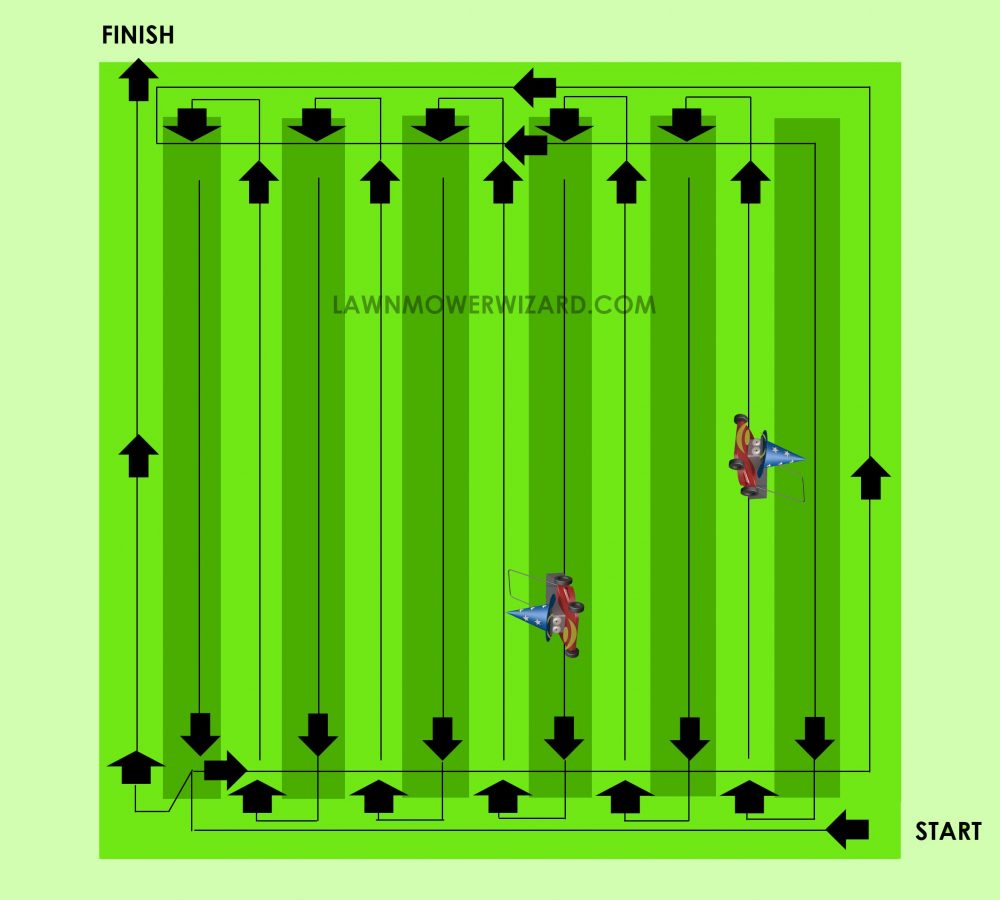Many proud lawn owners like to put the extra effort in to achieve those most unmistakable of features, lawn stripes. Though it looks good, a striped lawn is relatively simple to achieve if you have the right type of mower. You might associate lawn stripes with prestige and painstaking levels of lawn care, but in actual fact having stripes doesn’t actually say anything about the quality and health of the grass (maintaining this is a far more laborious task). The striped affect can be achieved using both rotary mowers and cylinder mowers.
Choose a lawn mower with a rear roller for best results
One of the distinct advantages of having a striped lawn over a non striped lawn is that stripes can hide any slight imperfections such as areas that differ in colour slightly, this is achieved by the stripe breaking up such areas and making them less noticeable – Incidentally I’m told manufacturers of bus and train seat upholstery do a similar thing by using elaborately patterned fabric to hide dirt… but perhaps we shouldn’t spend too much time thinking about that!
Anyway, moving on…
The golden rule when mowing to achieve stripes is to be systematic with your mowing. Given that the roller will push the grass down in the direction you are pushing it is important to push the mower forwards at all times or else the grass could be dragged backwards and the effect lost. Always ensure that the current stripe slightly overlaps the adjacent stripe so that no rogue tufts of grass are left once you have finished. One of the easiest ways to achieve this is by sitting the rear wheel of the mower in the previous stripe as you mow, as the roller and blade sits inside of this, so nothing should be left uncut or unrolled.
Decide which direction the stripes will run in before you start then…
1. Cut along the edge of the lawn perpendicular to the direction that you want the stripes to be and then back across the lawn making sure to overlap the first stripe using the method described above. These first two stripes are simply to ensure that the edge of the lawn is taken care properly before you commence with your ‘proper’ stripes which will go back over this area
2. Turn the mower 90° and create your first permanent stripe by going down the edge of the lawn in the direction that you want your stripes to go.
3. Repeat the process described in step 1 (now at the other opposite of the lawn)
4. It’s now simply a case of creating the rest of the lawn stripes by turning the mower a 180° at the end of the lawn each time you have finished a stripe. Done properly this should create a neat and regimental straight pattern of stripes.
This diagram illustrates the process described above:



